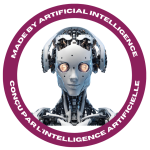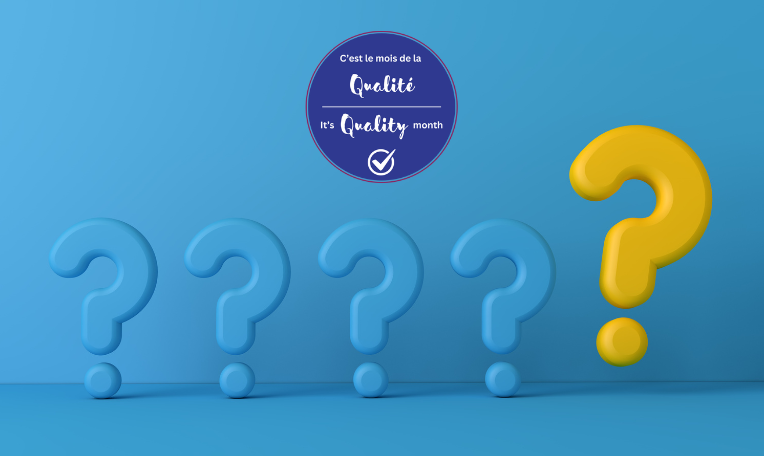AI-Powered Continuous Improvement in Manufacturing & Services

AI in Continuous Improvement is Revolutionizing in Medium-Sized Organizations. Continuous improvement (CI) has long been the foundation of operational excellence. Lean, Kaizen, and Six Sigma have helped organizations improve processes, eliminate waste, and boost quality. Today, Artificial Intelligence (AI) is becoming a game-changer in how CI is implemented.
For medium-sized companies in manufacturing and services, integrating AI into CI is no longer a futuristic idea. It’s a practical, high-impact strategy to increase productivity, reduce errors, and respond more effectively to market demands.
Why AI Matters for Continuous Improvement
Medium-sized businesses often face tight margins and growing complexity. AI offers a way to do more with less by analyzing data faster, automating tasks, and improving decision-making.
Key benefits of AI in continuous improvement include:
- Real-time monitoring of processes
- Accurate demand forecasting
- Improved quality control
- Reduced downtime
- Enhanced customer experience
Let’s explore how AI is reshaping continuous improvement in both manufacturing and service industries.
AI in Manufacturing: Boosting Efficiency and Quality
Predictive Maintenance
AI systems analyze equipment data to predict failures before they happen. This helps companies reduce unplanned downtime and maintenance costs. For example, predictive maintenance tools have increased uptime by 20% and reduced maintenance expenses by 10%.
Quality Control
AI-powered visual inspection systems can detect defects in real-time. These tools are more accurate than human inspectors and help reduce product returns and warranty claims. Companies like Ford and BMW are already using AI to improve assembly line quality.
Supply Chain Optimization
AI enhances supply chain performance through better demand forecasting and inventory management. By analyzing historical sales and market data, AI can reduce forecasting errors by up to 50%, resulting in leaner operations.
AI in Services: Enhancing Delivery and Customer Experience
Customer Service Automation
AI chatbots and virtual assistants handle routine inquiries 24/7. This reduces response time and allows staff to focus on complex issues. AI also personalizes responses based on customer history, improving satisfaction.
Process Automation
AI-powered tools automate repetitive back-office tasks like data entry, invoice processing, and scheduling. This frees employees to work on high-value tasks and reduces human error.
Predictive Analytics
AI identifies trends and predicts future service demands. In healthcare, for example, AI helps hospitals forecast patient admissions and optimize staffing. This improves service quality and resource utilization.
Integrating AI with Lean, Kaizen, and Six Sigma
AI doesn’t replace CI frameworks; it enhances them. Lean and Kaizen benefit from AI’s ability to analyze vast datasets and identify waste. In Six Sigma, AI accelerates root cause analysis and process optimization.
Key synergies include:
- Faster PDCA (Plan-Do-Check-Act) cycles
- Real-time quality monitoring
- Continuous learning from operational data
Companies with strong CI cultures are better positioned to adopt AI successfully. When paired with the right strategy, AI becomes a powerful enabler of performance and agility.
Benefits of AI-Driven Continuous Improvement
Efficiency: AI automates routine tasks and provides data-driven insights, allowing teams to focus on innovation.
Quality: AI improves accuracy in quality control and reduces process variability.
Cost Savings: Better forecasts and optimized operations reduce waste and lower costs.
Speed: Real-time monitoring enables quicker decisions and faster improvements.
Customer Satisfaction: AI helps deliver personalized, timely service, increasing loyalty and trust.
Challenges to Consider
While AI offers great potential, there are challenges:
- Data quality: AI relies on clean, structured data.
- Change management: Teams need training to adopt AI tools effectively.
- Investment: Initial setup can be costly. Start with high-ROI pilot projects.
- Ethics and compliance: Ensure AI use aligns with data privacy and fairness standards.
How to Get Started
- Start Small: Choose one high-impact area like quality control or customer support.
- Pilot First: Test the AI tool on a small scale to measure impact.
- Engage Your Team: Train staff to work with AI tools and use their feedback.
- Measure & Scale: Use KPIs to assess success and expand gradually.
AI integration should follow the same logic as any CI project: define goals, measure results, and refine continuously.
Final Thoughts
AI is not a silver bullet, but when applied strategically, it’s a catalyst for continuous improvement. For medium-sized businesses, AI can deliver tangible gains in productivity, quality, and customer satisfaction.
Leaders who embrace AI in their CI strategies will be better positioned to compete, grow, and adapt in a rapidly changing world.
Need help integrating AI into your CI initiatives? Reach out to explore how our tailored approach with our partners can help your organisation scale smarter and faster.
____________________________________
About Veronica B. Marquez, M.Sc., CSSBB

I help growing manufacturing and service organizations scale without chaos—by turning operational challenges into sustainable performance gains. My superpower is making strategy real at every level of the business: connecting people, processes, and purpose to drive productivity, engagement, and resilience. I bring clarity to complexity and help teams execute better, faster, together. Through a proven lens of operational excellence, continuous improvement, and supply chain optimization, I work with leaders to align efforts, simplify execution, and create systems that actually support growth.
Named one of the Top 50 Experts in Operational Excellence by the PEX Network, I bring over 20 years of experience across sectors like manufacturing, distribution, mining, and public services. I teach Lean Six Sigma at the executive education level, lecture on service design in a master’s program, and host a LinkedIn Live series focused on Excellence in Industry 5.0. Ready to explore how operational excellence can transform your business? Reach out https://www.linkedin.com/in/veronicabm/.
📷 AI generated image by Canva








